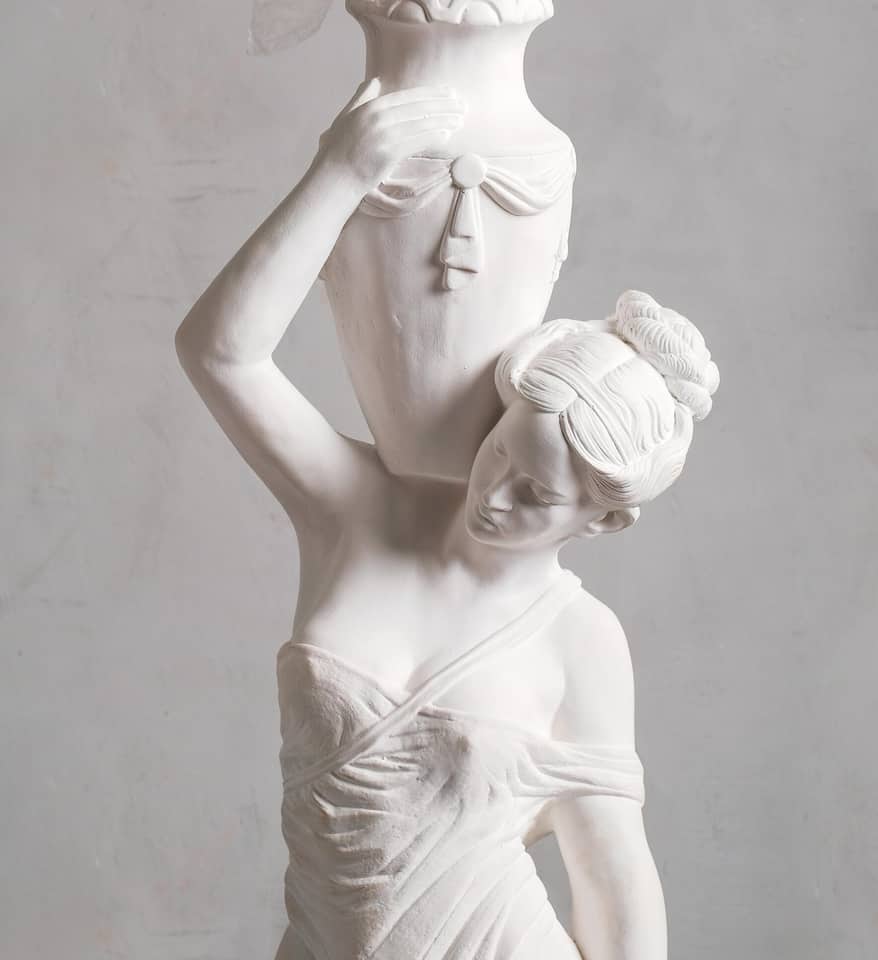Have you ever wondered why marble is used for sculptures and statues? In this article, we will explore all the reasons behind this material’s popularity, as well as its limitations.
So why is marble used for statues? Marble has been a popular choice for centuries because of its natural beauty, but also due to its durability in harsh conditions. Marble is often used for statues or sculptures because it’s a natural stone that is very easy to work with giving the artist the flexibility to sculpt lifelike figures. It can withstand temperature changes and can last very long. Unfortunately, it does not resist water very well and needs more care than other materials that are often used in statues.
In the remaining parts of this article, I’m going to share with you some more reasons why marble is used for statues. Keep reading this article to find out more.
The Pros Of Using Marble For Statues
There are a lot of advantages to using marble for statues. When it comes down to it, many of the benefits will be based on individual preferences and this list may not be exhaustive.
Below are some of the common advantages of using marble for statues.
1. Marbles Are Easy To Work With
One of the basic reasons why marble is used for sculptures or statues is because they are easy to work with.
Marble is an excellent stone for carving. Marble is relatively soft and makes carving statues very fun.
Marble also doesn’t chip easily when being sculpted – which means you can use heavy-duty tools like chisels, hammers, mallets, axes, and essentially anything applicable to make beautiful masterpieces.
This is not to say marbles do not chip entirely. It is not unusual to have marble chip, however, it won’t affect the overall structural integrity of a sculpted statue – it adds to the dramatic character a marble statue develops with time.
Marble has the perfect density among other characteristics to handle smooth curves, shapes, details, and shine when polished than one can achieve with other stones like granite – which is comparatively harder than marble.
2. Marbles Are Great For Rendering Lifelike Figures
Another great reason why marble is used for sculptures and statues is that you can render lifelike statues very easily.
Although marble is a stone it has a very consistent texture (non-foliated), so it’s easy to create the texture of the skin and the drapery clothes on the statue.
When sculptors use other materials like bronze, they have to spend more time smoothing out bumps in order to make their work look realistic.
If you want your sculpture or statue to be lifelike, then marble would be an excellent choice! You won’t regret using this material if that is what you’re looking for.
One of the best things I love about the effects you can achieve when you use marble to sculpt human figures is how it tends to be translucent and glows when it is well lit rather than the rigid opacity you would often have with other materials.
3. Marble Is A Durable Material
Artists prefer working with marble for statues primarily due to how durable it is against deterioration throughout the years (even after hundreds!)
Marble lasts long with very few signs of deterioration when used for statues. This is among one of the most advantages of using marble over other substances for statues because it lasts so long without any signs of deterioration.
This is important because most statues are made for the outdoors and will not become brittle like plaster; therefore the statue stays intact for many many years.
The best part is, as the centuries pass, marble statues often acquire a new layer of beauty that contrasts with their age.
Statues and statuaries made from marble are exciting to explore because they’re not all uniform in color or texture due to time’s passage; instead, each piece carries its own unique history within it!
4. Marble Has Good Stability
When you think of statues what comes to mind is a colosal piece of artwork that looks majestic. On one hand, marble is a perfect material for carving while on the other hand, it offers the majestic look you would look out for in a stone statue.
The weight of the marble is suitable to maintain stability for marble statues.
The Downsides To Using Marble For Statues
Using marble for statues also comes with a couple of caveats to it. In the remaining parts of this article, I’m going to share with you some of the downsides to using marble for sculpture.
1. Marble Is Relatively Expensive
One of the first things you will notice when it comes to marble’s use for sculpture is its price tag.
Marble is a precious commodity that’s hard to come by, which makes the use of marble a luxury because only rich people can afford to have statues made from this material.
The process of quarrying marble and then cutting it into blocks calls for precision equipment – with machinery like saws or laser cutters.
This is due to how fragile marble is. When cutting through natural stone there’s always the possibility of breakage simply because nature’s fragile. This means that any erroneous mistakes during carving will make an irreparable sculpture.
2. Making Marble Statues Require Special Skills
There is certainly a huge learning curve to using marble for statues. It takes time, special tools, and skills to master the art-making marble statues.
But of all that is required, a lot more skill is essential in order to be able to sculpt with marble as opposed to other materials like clay or wood.
Most marble sculptors will need a lot of many years of training and practice before they qualify as sculptors who are able to work with marble.
3. Marbles Do Not Do Well With Water
Marble as a material does not do so well with water. In most cases, marble statues meant for the outdoors will be protected with natural stone sealants.
However, with time the sealant, if not constantly replaced, will wear out and water will start to seep into the marble whenever it rains.
Why is water seeping into marble bad? This is because marbles contain iron deposits that get oxidized and forms rust when water gets into marble.
This is why you will often see some statues and sculptural figures having patches of orange, yellow, or brown discoloration on them usually known as rust.

